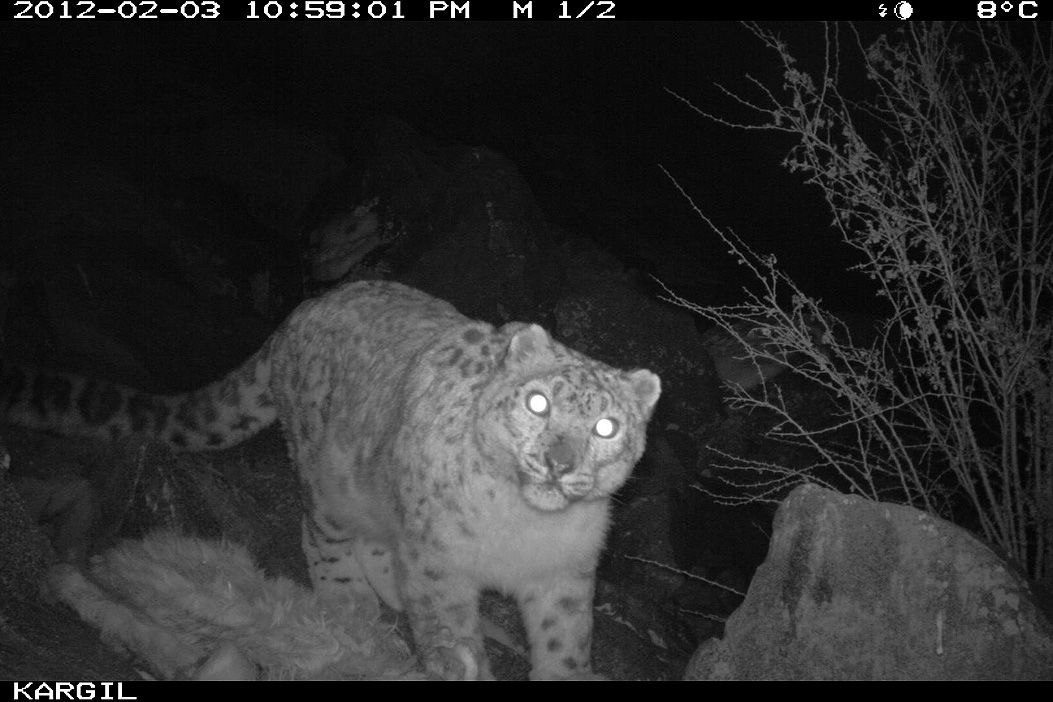
New Video Shows Rare Snow Leopards in Kashmir

Still images from camera traps set up near the India-Pakistan border revealed the presence of rare snow leopards in the region earlier this year and have now been stitched together into a new video that shows the leopards eating, as well as other species that roam the area.
The camera traps were set up by the conservation group WWF-India in 2010 in Kashmir, just a few miles from the line of control separating the Indian province from Pakistan. In February of this year, the cameras revealed the presence of at least two snow leopards. They were only the second photographic evidence ever captured indicating snow leopards (Panthera uncia) are now living in the region.
The photo captures yielded more than 500 photographs of the two animals. These photos have now been put together in a sort of flip-book-like video that shows one of the leopards prowling and eating a recent kill.
After the snow leopard is gone, other predators and scavengers, such as the red fox (Vulpes vulpes), come in to feast on the leftovers. Feral and domestic dogs also make an appearance in the video, gnawing on the carcass of the kill.
Wildlife in the contentious area suffered during years of armed conflict, but the relative peace of recent years has helped species recover, WWF-India said in the video.
The IUCN, an independent international body that assesses the status of species around the globe, has listed snow leopards as endangered since at least 1986. The big cats, known for their cloudy gray fur and dark spots, are native to Central Asia's high mountains, and their numbers have been decreasing.
Reliable numbers are difficult to establish, but it is estimated that between 4,000 and 6,500 snow leopards are left in the wild.
Sign up for the Live Science daily newsletter now
Get the world’s most fascinating discoveries delivered straight to your inbox.
Recently, camera traps have also spotted snow leopards in Afghanistan, Bhutan, Siberia and Tajikistan, where the notoriously shy creatures stole one of the cameras spying on them.
This story was provided by OurAmazingPlanet, a sister site to LiveScience.












